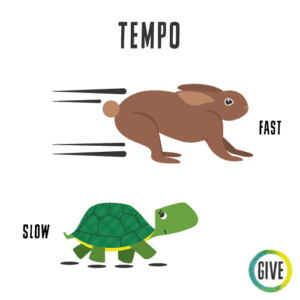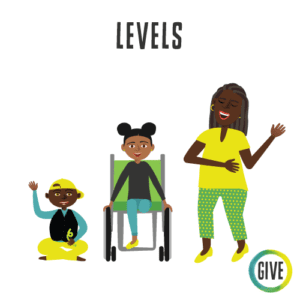探索运动的对立面
供稿人阿曼达纽曼
![]()
说明
这项活动将通过动作介绍和探索对立面的概念。
路线
- 在教室前面或圆圈中央介绍活动。
- 介绍对立面的概念。从学生那里获得定义。
- 提供一些术语,如 快, 高, 和 大.示例术语也可以来自课堂上的故事或概念;可以是简单的,也可以是复杂的。请学生帮助说出对立面的名称。在墙上贴出表格或 视觉词汇 显示。
- 解释一下,在这项活动中,学生将做与领队相反的事情(例如,"我走得快,你怎么走? 慢!")。
- 开始以一种速度移动,并鼓励学生以相反的速度移动。
- 当所有学生都在你身边时,交换位置,等待学生回答。重复。
- 随着学生对变化的反应能力的增强,在切换到另一种速度之前,可以改变在一种速度下所花费的时间。在高和低两个级别上重复这一过程。
- 活动变奏曲:
- 这项活动可以由一位领导和跟随的小组或与合作伙伴一起工作的学生来完成。在合作伙伴中,在转换之前确定领先的合作伙伴和跟随的合作伙伴可能会有所帮助。
- 还可以用学生们众筹的其他对立面(如大和小、光滑和锋利等)来创建更多的回合。
- 为了增加活动的复杂性,可以通过以下方式提高活动的挑战性:
- 引入对立分层的概念(领导者或合作伙伴缓慢而高地移动;团队或合作伙伴通过快速和低速移动来响应)。
- 与您的伴侣在对面导航时穿过地板。
- 取消伙伴中的领导和跟随角色,而是挑战学生无论谁改变速度、水平等都做出反应。
过渡到活动
下达指示,让学生完全按照你的指示移动到他们将要进行活动的空间。祝贺他们如此严格遵守指示,然后告诉他们在下一个活动中,他们将做与你相反的事情。
转出活动
让学生选择他们最喜欢的方式来摆脱你使用过的概念,安全地回到他们的办公桌或椅子上,注意他们的邻居。
课堂布置
该活动可根据场地和学生需要进行调整。学生最好有自由活动的空间。这项活动也可以在课桌上或椅子上进行。如果是在课桌上,则要求学生整理自己的空间,移动任何可能妨碍他们的东西。
支持/自适应材料/工具
- 视觉词汇 卡片可以帮助识别和想象对立面。
- 这项活动可以有多种规模,比如变成坐着跳的手舞。
- 考虑时不时或自始至终叙述动作,标注领导者如何动作以及小组如何回应。
课堂专业人员可能扮演的角色
- 课堂专业人员可以与需要支持的学生结成伙伴,帮助讲述、提示或示范。这可以在组长和小组结构中进行,也可以作为伙伴关系中的第三者。
- 课堂专业人员也可能会协助使用视觉词汇或指向墙上的书面文字。
远程教学的调整
![]()
这项活动在远程学习的领导者和小组结构中效果最佳。叙述和使用书面标签或视觉词汇也会有所帮助。在远程环境中可以引入的另一个相反的例子是近(对着屏幕)和远(离开屏幕)。对于异步学习,指导和演示视频可以帮助学生在家中与照顾者或兄弟姐妹一起开展活动。


